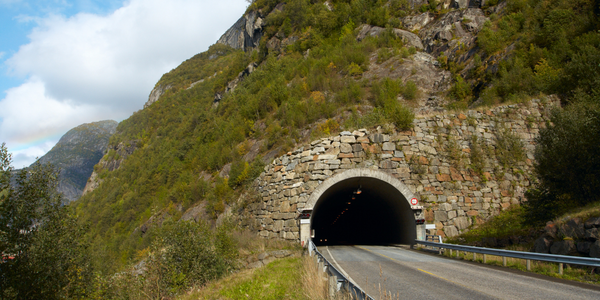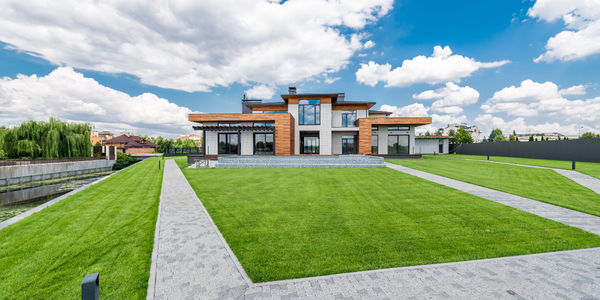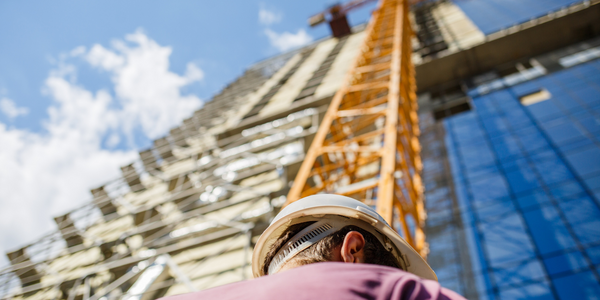Download PDF
Improving Building Comfort and Energy Savings

Technology Category
- Automation & Control - Human Machine Interface (HMI)
- Automation & Control - Supervisory Control & Data Acquisition (SCADA)
Applicable Industries
- Construction & Infrastructure
Applicable Functions
- Business Operation
Use Cases
- Building Automation & Control
The Challenge
During the energy crisis of the 1970’s there was a sea-change in the building industry when it paid more attention to the idea of conserving energy and introduced the terms Building Management System (BMS) and Building Automation System (BAS). Continuing rising energy prices and carbonreduction issues have also further spurred the development and deployment of BMS in recent years. However, the early systems were bulky, not user friendly, unreliable, and very expensive. With the advent of computerization, BMS analog signals became digitized so as to be communicated over long distance as well as facilitating the building management process these issues became less.Due to the multiple many management functions and wide range of expertise, modern BMS is quite complex. Successful building management not only needs to link to a multitude of devices but also take account of the suitability of the software for the intended application. Equipped with a web browser-based software package for human-machine interfaces (HMI) and supervisory control and data acquisition (SCADA) which provides automated, centralized and unattended management with a high degree of electronic accuracy, the BMS can fully control the building’s mechanical and electrical equipments and thus effectively monitor energy consumption so that it provides a comfortable, safe and secure environment.
Property management is facing various and complex challenges and reducing operating costs have become increasingly important for building owners. As a result, a growing number of new and refitted buildings are being designed to use less energy and focus on the building’s performance. A System Integrator was helping a builder implement advanced BMS for its newest construction project in a creative park in Asia. The construction, a 14-storey building with four underground floors, covers an area of nearly one hundred thousand square meters and contains three distinct sectors - shopping mall, hotel guest room floors and office floors. In order to provide optimal energy management, this BMS needed to be capable of monitoring and controlling a variety of facilities, including air conditioning, power system, plumbing system, fire system, ventilation, elevator, lighting, garden watering and so on. Meanwhile, using one system with an adequate number of nodes in a main control room to manage three different places was a key requirement but each place had to have their own dedicated system and can be controlled independently without mutual interference so as to saving the implementation costs. Due to the need to monitor many areas, there would be tens of thousands of detection points, and the new system also needed to offer remote control capabilities so that building managers or patrol staff can view the status of various facilities in real-time and deal with issues using handheld or mobile devices.
About The Customer
A creative park in Asia
The Solution
As well as employing Advantech’s DDC controller and BAS-3000 series remote I/O modules to connect various devices on both the inside and outside of the building, and adopting a 12" industrial panel as an on-site HMI terminal for electromechanical cabinets, the kernel of this solution is HMI/SCADA Software. Advantech WebAccess is a multi-layer networking architecture system and its almost unlimited nodes allow users to link a large number of remote clients to a central server. Based on a unified energy management framework and the area of responsibility concept, the system is divided into three BAS subsystems (each with about 12,000 clients) to manage the shop, hotel and office areas. The building manager can supervise the operational conditions of subsystems from the control center while each of them can operate alone in normal times but support each other when necessary. The dynamic display provides a mechanism for refreshing the state of the graphs, real-time data, historical trends and alarm information. Through a standard web browser or mobile client, users can use tablet PC to view, control and configure the system remotely. To prevent unauthorized data changes, WebAccess supports various privileges torestrict display and data access so as to enhance system security. In addition, this SCADA system can automatically turn on or off the facilities to maintain the best operating conditions with the lowest cost in light of the user’s operating strategy. Conventional periodic maintenance and overhaul (every six months) would also change in accordance with the operating hours of the equipment. Proper maintenance practices can greatly save manpower and improve work efficiency. Alarm or fault notification can be supplied via several methods such as immediately displaying on screen or sending short messages, e-mails and reports to the manager. Therefore, the person in charge can quickly find out the failures so as to quickly troubleshoot the problems and make sure that the building is always operating efficiently.
Quantitative Benefit
Related Case Studies.

Case Study
IoT System for Tunnel Construction
The Zenitaka Corporation ('Zenitaka') has two major business areas: its architectural business focuses on structures such as government buildings, office buildings, and commercial facilities, while its civil engineering business is targeted at structures such as tunnels, bridges and dams. Within these areas, there presented two issues that have always persisted in regard to the construction of mountain tunnels. These issues are 'improving safety" and "reducing energy consumption". Mountain tunnels construction requires a massive amount of electricity. This is because there are many kinds of electrical equipment being used day and night, including construction machinery, construction lighting, and ventilating fan. Despite this, the amount of power consumption is generally not tightly managed. In many cases, the exact amount of power consumption is only ascertained when the bill from the power company becomes available. Sometimes, corporations install demand-monitoring equipment to help curb the maximum power demanded. However, even in these cases, the devices only allow the total volume of power consumption to be ascertained, or they may issue warnings to prevent the contracted volume of power from being exceeded. In order to tackle the issue of reducing power consumption, it was first necessary to obtain an accurate breakdown of how much power was being used in each particular area. In other words, we needed to be able to visualize the amount of power being consumed. Safety, was also not being managed very rigorously. Even now, tunnel construction sites often use a 'name label' system for managing entry into the work site. Specifically, red labels with white reverse sides that bear the workers' names on both sides are displayed at the tunnel work site entrance. The workers themselves then flip the name label to the appropriate side when entering or exiting from the work site to indicate whether or not they are working inside the tunnel at any given time. If a worker forgets to flip his or her name label when entering or exiting from the tunnel, management cannot be performed effectively. In order to tackle the challenges mentioned above, Zenitaka decided to build a system that could improve the safety of tunnel construction as well as reduce the amount of power consumed. In other words, this new system would facilitate a clear picture of which workers were working in each location at the mountain tunnel construction site, as well as which processes were being carried out at those respective locations at any given time. The system would maintain the safety of all workers while also carefully controlling the electrical equipment to reduce unnecessary power consumption. Having decided on the concept, our next concern was whether there existed any kind of robust hardware that would not break down at the construction work site, that could move freely in response to changes in the working environment, and that could accurately detect workers and vehicles using radio frequency identification (RFID). Given that this system would involve many components that were new to Zenitaka, we decided to enlist the cooperation of E.I.Sol Co., Ltd. ('E.I.Sol') as our joint development partner, as they had provided us with a highly practical proposal.

Case Study
Splunk Partnership Ties Together Big Data & IoT Services
Splunk was faced with the need to meet emerging customer demands for interfacing IoT projects to its suite of services. The company required an IoT partner that would be able to easily and quickly integrate with its Splunk Enterprise platform, rather than allocating development resources and time to building out an IoT interface and application platform.

Case Study
Bridge monitoring in Hamburg Port
Kattwyk Bridge is used for both rail and road transport, and it has played an important role in the Port of Hamburg since 1973. However, the increasing pressure from traffic requires a monitoring solution. The goal of the project is to assess in real-time the bridge's status and dynamic responses to traffic and lift processes.

Case Study
Bellas Landscaping
Leading landscaping firm serving central Illinois streamlines operations with Samsara’s real-time fleet tracking solution: • 30+ vehicle fleet includes International Terrastar dump trucks and flatbeds, medium- and light-duty pickups from Ford and Chevrolet. Winter fleet includes of snow plows and salters.

Case Study
Condition Based Monitoring for Industrial Systems
A large construction aggregate plant operates 10 high horsepower Secondary Crusher Drive Motors and associated conveyor belts, producing 600 tons of product per hour. All heavy equipment requires maintenance, but the aggregate producer’s costs were greatly magnified any time that the necessary maintenance was unplanned and unscheduled. The product must be supplied to the customers on a tight time schedule to fulfill contracts, avoid penalties, and prevent the loss of future business. Furthermore, a sudden failure in one of the drive motors would cause rock to pile up in unwanted locations, extending the downtime and increasing the costs.Clearly, preventative maintenance was preferable to unexpected failures. So, twice each year, the company brought in an outside vendor to attach sensors to the motors, do vibration studies, measure bearing temperatures and attempt to assess the health of the motors. But that wasn’t enough. Unexpected breakdowns continued to occur. The aggregate producer decided to upgrade to a Condition Based Monitoring (CBM) sensor system that could continually monitor the motors in real time, apply data analytics to detect changes in motor behavior before they developed into major problems, and alert maintenance staff via email or text, anywhere they happened to be.A wired sensor network would have been cost prohibitive. An aggregate plant has numerous heavy vehicles moving around, so any cabling would have to be protected. But the plant covers 400 acres, and the cable would have to be trenched to numerous locations. Cable wasn’t going to work. The aggregate producer needed a wireless solution.






